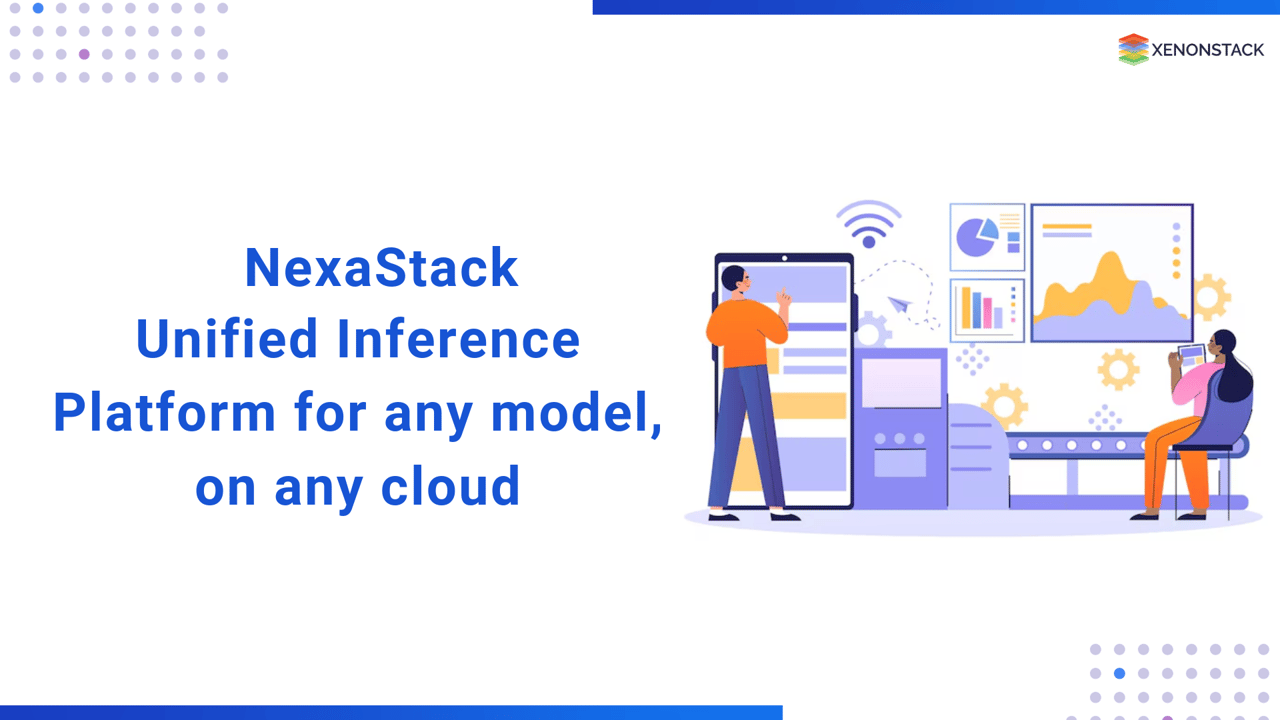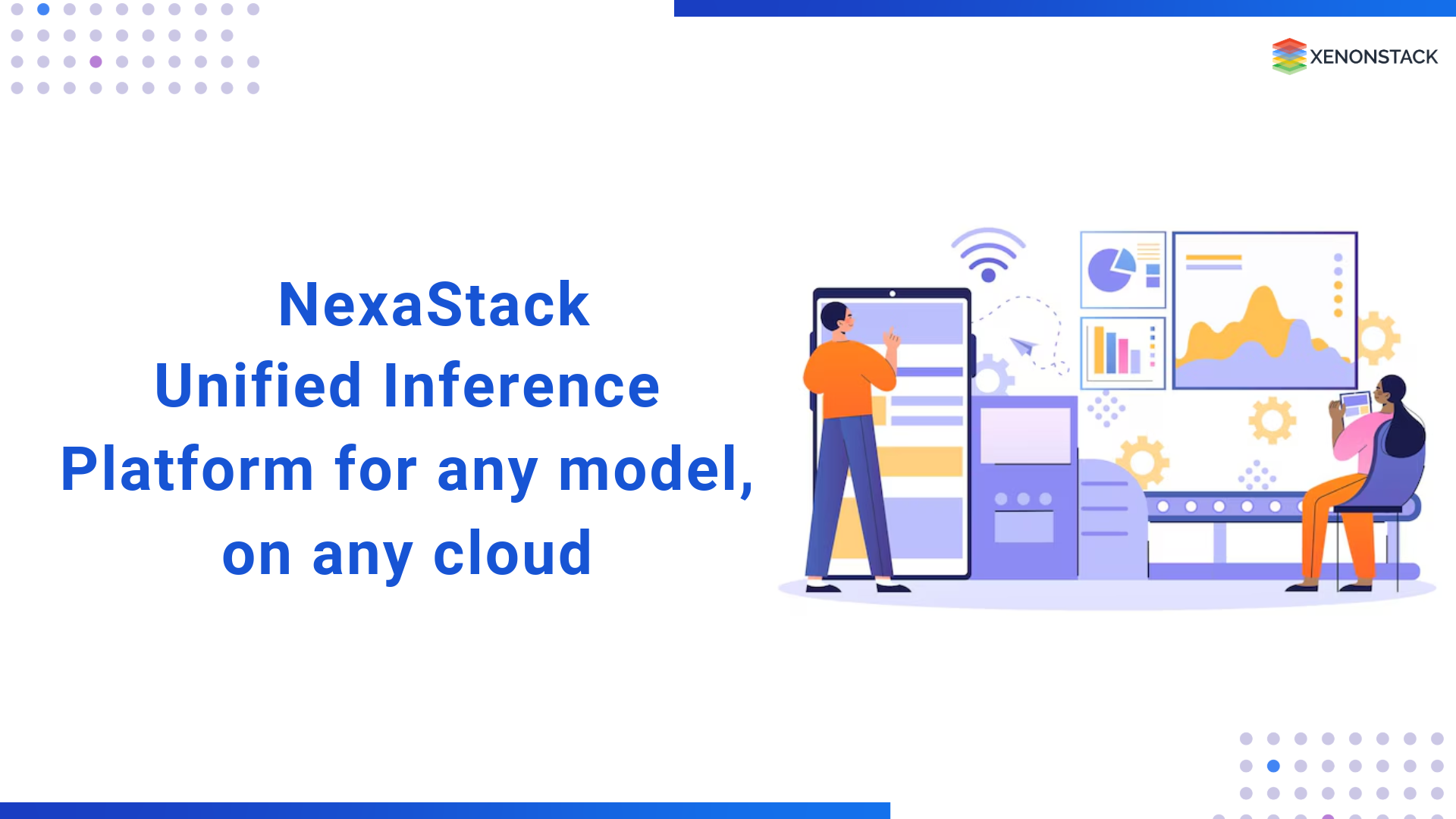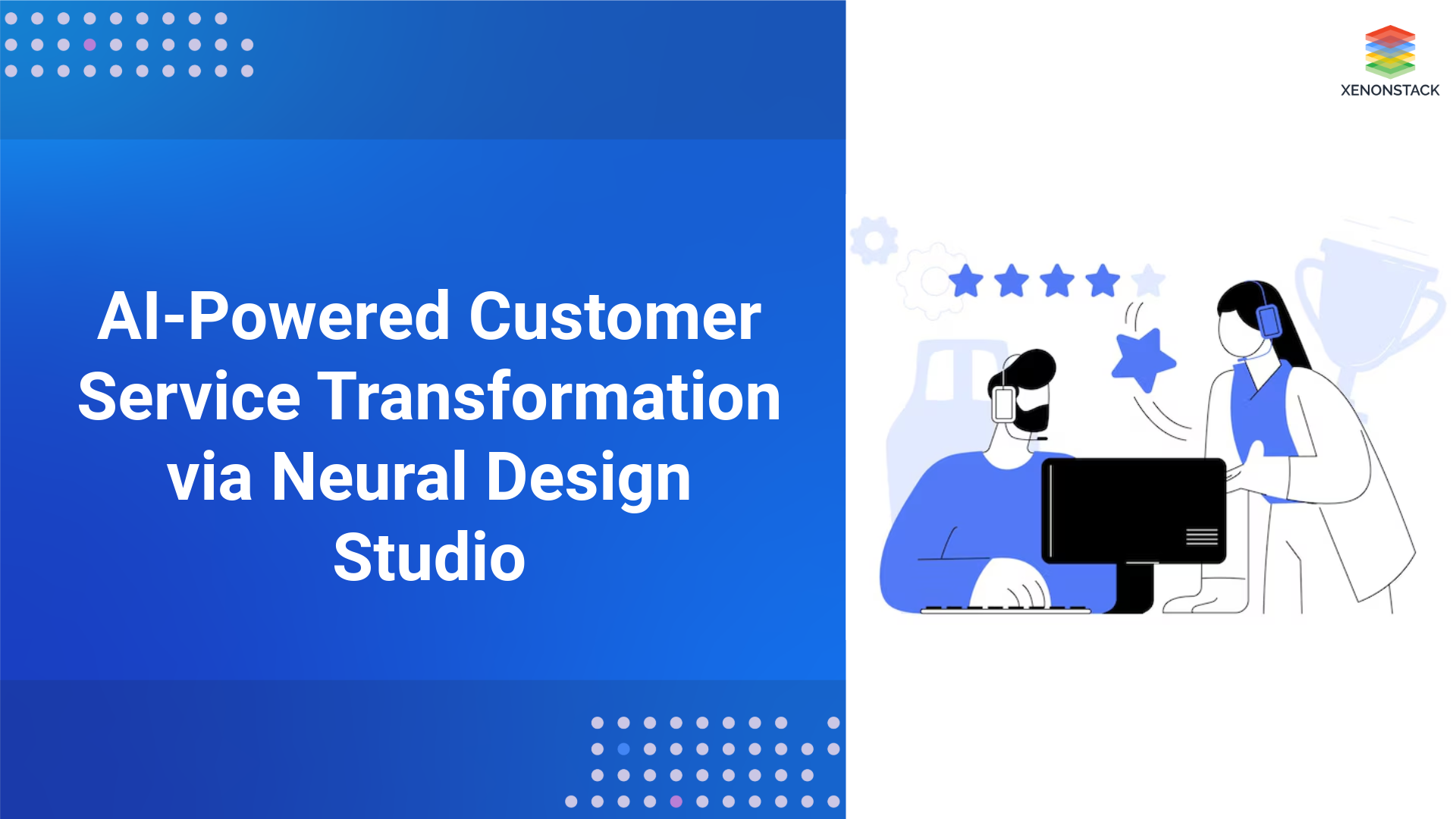
Executive Summary
NexaStack is a secure, private AI infrastructure management platform that enables enterprises and AI-native startups to run large language models (LLMs) such as LLaMA, Qwen, and Mistral across AWS, on-premises, and hybrid environments. Built for regulated industries like finance and healthcare, NexaStack simplifies the complexities of Kubernetes, GPU provisioning, and infrastructure scaling. It offers one-click onboarding for cloud and on-prem clusters, supports air-gapped deployments, and enforces strict compliance with enterprise-grade IAM, RBAC, and audit logging.
With integrated observability tools like Langfuse and Grafana, NexaStack provides real-time insights into model performance, cost, and GPU usage. Its BYOC (Bring Your Own Cluster) support and modular architecture enable organizations to streamline model deployment, optimize infrastructure costs, and maintain full control over sensitive data. By unifying the LLM lifecycle under a single, cloud-agnostic platform, NexaStack accelerates AI innovation while ensuring compliance, efficiency, and scalability.
Use Case Context
Industry Context
Industries such as financial services, healthcare, and AI-driven startups face stringent regulatory requirements, data residency laws, and rising infrastructure complexity when scaling AI workloads. With the increasing adoption of LLMs for document intelligence, customer service, fraud detection, and clinical data summarization, enterprises need a secure, cost-effective, and observable deployment strategy.
Customer Profile
-
Customer: Confidential
-
Industry: Financial Services / Healthcare / AI Startups
-
Location: Global
-
Company Size: 100–1000 employees
-
Technology Stack: Kubernetes, AWS EKS, GPU infrastructure, LLMs
Problem Definition
Business Challenges
-
No access to secure and private LLM inference infrastructure.
-
Compliance concerns with running LLMs on public cloud services.
-
Complex Kubernetes onboarding for ML teams with limited DevOps capabilities.
-
High operational costs from idle GPUs and inefficient scheduling.
Technical Challenges
-
Heterogeneous Kubernetes environments without unified control.
-
No integrated observability, tracing, or cost tracking for AI workloads.
-
Lack of lifecycle tools for model deployment, scaling, and monitoring.
-
Inconsistent inference performance across model types and environments.
NexaStack Solution Overview
NexaStack introduces a Unified Inference Control Plane for managing LLM workloads:

Core Platform Capabilities
-
One-Click Cluster Onboarding: AWS EKS, on-prem K8s, EKS Anywhere.
-
LLM Deployment Engine: Deploy LLaMA, Qwen, and Mistral models via UI/CLI.
-
Integrated Observability: GPU usage dashboards, Grafana integration.
-
Prompt Tracing: Langfuse for real-time tracking of prompt effectiveness.
-
Security by Design: IAM, RBAC, audit logging, and VPC isolation.
-
Modular Orchestration: Plugin-based architecture for new model types.
-
Air-Gapped Mode: For sovereign cloud and zero-trust environments.
Key AWS Services Used
-
Amazon EKS for Kubernetes orchestration
-
Amazon EC2 (GPU instances) for compute
-
Amazon VPC for network isolation
-
Amazon S3 for secure model and dataset storage
-
IAM and CloudWatch for governance and observability
-
AWS Cost Explorer for real-time cost control
Implementation Phases
Phase 1: Infrastructure Setup
-
Secure onboarding via kubeconfig or AWS IAM credentials.
-
Infrastructure validation and environment health checks.
-
Provisioning of GPU nodes and configuration of private VPC.
Phase 2: Model Lifecycle Automation
-
Upload and register models through UI/CLI.
-
Set inference parameters, autoscaling thresholds, and scheduling.
-
Enable Langfuse-based prompt tracing for observability.
Phase 3: Monitoring and Optimization
-
Real-time dashboards via Grafana for GPU consumption.
-
Track inference performance metrics and latency.
-
Use Cost Explorer for forecasting and optimization.
How does it work?
| Step | Component | Description |
|---|---|---|
| 1 | Cluster Registration | Onboard AWS or on-prem clusters via secure credentials |
| 2 | Resource Provisioning | NexaStack provisions GPU-based workloads intelligently |
| 3 | Model Upload | Add LLaMA, Qwen, or Mistral models with custom templates |
| 4 | Inference Execution | Run private LLM inference with autoscaled GPU clusters |
| 5 | Prompt Tracing | Monitor prompt performance using Langfuse |
| 6 | Observability | Visualize costs and GPU utilization with Grafana |
| 7 | Access Control | IAM-based permissions and logging ensure governance |
Innovation Highlights
-
GPU Scheduling Intelligence: Smart allocator reduces idle GPU wastage by 60%.
-
Prompt-Centric Observability: Fine-grained LLM tracing improves model accuracy and user trust.
-
Zero Egress Architecture: Private VPC ensures no data leaves customer perimeter.
-
Modular Control Plane: Future-ready plugin support for multimodal and fine-tuned models.
Results and Impact
Quantifiable Business Outcomes
-
Time-to-Production cut from 3 weeks to less than 2 hours.
-
GPU Cost Optimization achieved via autoscaling and right-sizing (60% reduction).
-
Compliant AI: Meets data residency and security mandates for regulated sectors.
-
Team Efficiency: 3x improvement in ML engineer productivity due to DevOps abstraction.
Technical Benefits
-
Unified dashboard for model health, latency, and GPU cost per token.
-
End-to-end model deployment and rollback with version control.
-
Seamless integration with enterprise IAM and existing Kubernetes ecosystems.
Lessons Learned
Through multiple enterprise deployments and platform iterations, the NexaStack team identified critical insights that shaped product evolution:
1. Abstraction Must Be Holistic, Not Just Technical
Teams initially sought GPU provisioning tools but soon needed deeper abstraction layers—Kubernetes management, model lifecycle automation, cost analytics, and access control. NexaStack evolved to become a full-stack control plane, not just an inference layer.
2. Security and Compliance Are Not Optional
Enterprises, especially in healthcare and finance, require zero-egress deployments, audit logs, and full RBAC integration from day one. This highlighted the need to design security-first infrastructure, including air-gapped options and network isolation.
3. Observability Is Key to Trustworthy AI
Traditional infrastructure monitoring was insufficient for LLMs. Teams needed token-level latency, prompt-level tracing, and GPU cost attribution per request. These metrics enabled them to debug model behavior, justify costs, and tune performance effectively.
4. LLM Workflows Need Hybrid Infrastructure
Many clients began on AWS but moved to on-prem or sovereign cloud due to policy changes or cost pressures. A truly hybrid and portable solution is critical for long-term AI scalability, influencing NexaStack’s modular Kubernetes onboarding features.
5. DevOps Should Not Be a Barrier to ML Innovation
ML teams struggled with Kubernetes, YAML files, and GPU node scaling. NexaStack’s no-code model deployment interface dramatically increased developer productivity, proving that developer experience (DX) is a core business driver.
Future Plans
NexaStack continues to evolve based on customer feedback, emerging trends in AI infrastructure, and advancements in large model deployment. Below are the strategic milestones:
1. Multi-Cloud and Sovereign Cloud Expansion
-
Extend support for:
-
Azure Kubernetes Service (AKS)
-
Google Kubernetes Engine (GKE)
-
Private Sovereign Clouds (for EU, Middle East, and India)
-
Ensure seamless hybrid orchestration and compliance with local data laws.
2. Integrated Fine-Tuning Pipeline
-
Enable:
-
Low-rank adaptation (LoRA) and QLoRA workflows
-
Full dataset versioning and model checkpointing
-
Hyperparameter tuning with integrated resource scheduling
-
Goal: Make fine-tuning as easy as deployment, with GPU usage tracking and rollback support.
3. LLMOps Marketplace and Plugin Ecosystem
-
Launch curated LLM Marketplace with pre-integrated:
-
Foundation models (Mistral, Mixtral, Falcon)
-
Domain-specific models (BioGPT, FinGPT, Legal-BERT)
-
Third-party integrations (Weaviate, Pinecone, HuggingFace)
-
Developers can also build and share custom plugins for orchestration, tracing, or adapters.
4. Advanced GPU Resource Management
-
Introduce support for:
-
GPU slicing (MIG) for cost-efficient multi-tenant workloads
-
Dynamic KVCache offloading for high-token contexts
-
Execution Providers (EPs) integration (ONNX Runtime, TensorRT) to reduce latency
-
Result: Boost performance and reduce per-token inference costs for large-scale deployments.
5. Compliance-Centric AI Governance Layer
-
Add features for:
-
Automated compliance reports (HIPAA, SOC 2, GDPR)
-
Model card generation and risk scoring
-
Built-in bias and toxicity checks for deployed LLMs
-
Ensure safe and auditable usage of AI in regulated environments.
6. ML/LLM Agent Integration
-
Add support for:
-
Agent frameworks like LangGraph, CrewAI, and AutoGen
-
Visual workflow builders for task orchestration across multiple LLMs
-
Inter-agent tracing and feedback loops for performance optimization
-
Purpose: Enable Agentic AI use cases such as automated document analysis, decision support, and autonomous QA systems.
Conclusion
NexaStack is redefining how enterprises and AI-native startups approach LLM infrastructure at scale. As the demand for private, secure, and scalable AI systems grows, particularly in regulated sectors like finance, healthcare, and government, the need for a platform that abstracts infrastructure complexity while delivering enterprise-grade reliability becomes critical. Moreover, with its modular architecture, plugin extensibility, and future roadmap for fine-tuning, GPU slicing, and marketplace integrations, NexaStack is not just a platform for today—it’s built for the evolving needs of tomorrow’s AI-driven enterprises.
NexaStack sets the gold standard for modern LLM infrastructure that prioritises data sovereignty, compliance, operational agility, and long-term scalability. It is the foundational layer for any organisation seeking to harness the power of large models in a private, trustworthy, and cost-effective manner.
Next Steps Towards Nexastack Inference Platform
Talk to our experts about implementing compound AI system, How Industries and different departments use Agentic Workflows and Decision Intelligence to Become Decision Centric. Utilizes AI to automate and optimize IT support and operations, improving efficiency and responsiveness.
.webp?width=1921&height=622&name=usecase-banner%20(1).webp)

